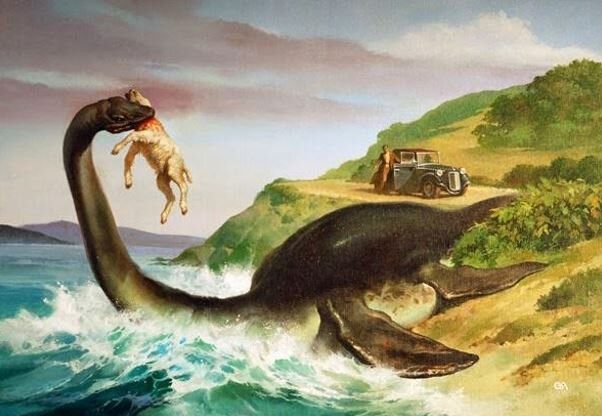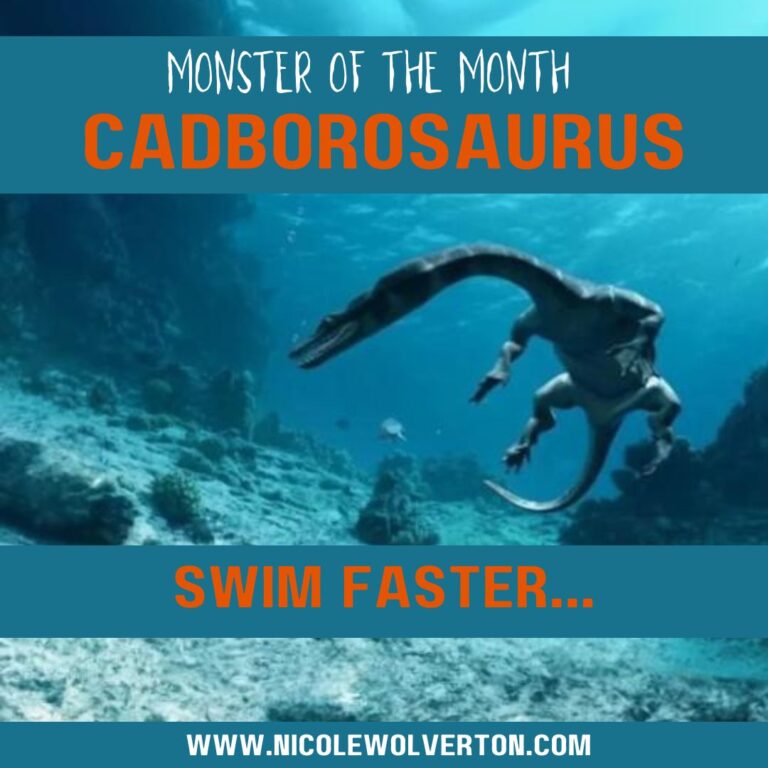If you’ve read an Advanced Reader Copy* of A Misfortune of Lake Monsters, you know I start my book off with a single quote: “Monsters cannot be announced. One cannot say: ‘Here are our monsters,’ without immediately turning the monsters into pets” (that’s Jacques Derrida, by the way, from his book The States of Theory). The Cadborosaurus is a prime example of turning monsters into pets. The locals in British Colombia call their pet monster “Caddy” for short.
Reportedly found on North America’s western coast bordering the Pacific Ocean, Caddy has a distinctly Loch Ness monster-esque appearance and has been sighted well over 300 times since the 1700s. Sightings are generally around Vancouver Island but range as far south as the San Francisco Bay. Like one or two other cryptids I’ve covered in the Monster of the Month over the last year, this may very well have started as a rumor started by Indigenous persons (in this case Alaskan Inuits) to scare off intruders. Over the years, there have been many sightings of Caddy that were later found to be something else–pack of sea lions, giant oarfish, basking shark, etc.
 Also like the vast majority of cryptids I’ve covered, Caddy has never actually hurt or attacked anyone–but quite a few depictions of the cryptid show it actively attacking ships or people. Why do we have to make things up to be freaked out by? Isn’t reality enough? That’s rich, coming from someone who writes horror and regularly enjoys being scared of fictional things for the fun of it, eh?
Also like the vast majority of cryptids I’ve covered, Caddy has never actually hurt or attacked anyone–but quite a few depictions of the cryptid show it actively attacking ships or people. Why do we have to make things up to be freaked out by? Isn’t reality enough? That’s rich, coming from someone who writes horror and regularly enjoys being scared of fictional things for the fun of it, eh?
It may or may not be the case, though, that Caddy is just a story. In 1937, a couple of whalers caught a sperm whale, and while gutting it found a very strange creature in the whale’s stomach: described as a dog-horse hybrid, the thing was 11 feet long, and they’d never seen anything like it. Did anyone from the science community get a look at the carcass? They did not. The carcass was allegedly preserved but lost. What’s interesting is that the story went big anyway–possibly owing to the fact that the first published reported sighting of the Loch Ness Monster in Scotland came just a few years before (in 1933). I guess Canada needed their own lake monster. Now, there is a photo or two (very grainy and inclusive), and Dr. Edward L. Bousfield, a zoologist, and Dr. Paul H. LeBlond, an oceanographer, did write a book and papers about the possibility of Caddy’s existence in the 1990s (they are pro-Caddy, by the way), eventually encouraging folks to think of Caddy as a contemporary plesiosaur (there’s a more in-depth discussion about that here). Huh. Same as one of the theories about the Loch Ness monster. Whatever the case, it’s not particularly compelling science, much as I love the idea of it (and if you read A Misfortune of Lake Monsters, that will be obvious).
In the era of cell phone video, there have–of course–been recorded sightings. Again, though, nothing particularly compelling and obvious. Still, I’d like to think that somewhere near Vancouver Island, there’s an entire family of Cadborosaurus who are just really really good at hiding and getting a big kick out of occasionally giving the humans a thrill with a near-sighting. Because that’s what happens when we turn our monsters into pets: they play jokes on us.
* If you’re looking for Advanced Reader Copies, they are available for request at Edelweiss, Netgalley, Booksirens, or directly from the publisher. Also, the book is now available for preorder–I’ve partnered with a great independent bookshop in South Philadelphia, A Novel Idea, for a campaign that involves a limited edition totebag for the first 50 people who order


2 Responses
Is the Caddy and Nessy the same animal that migrates like salmon and eels. Has a study been conducted to see if sighting happen at same time
There’s no telling! I like to think it’s entirely possible!